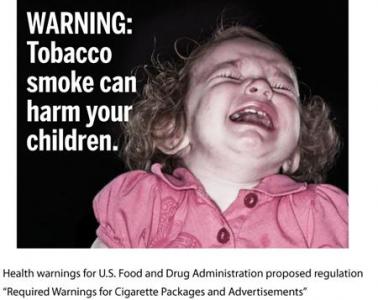Fewer Americans smoke, pace of decline slowing: CDC
Fewer American adults are smoking cigarettes, and those who still smoke have cut back on the number of cigarettes they smoke, but the rate of decline has begun to slow, health experts said on Tuesday.
Smoking and exposure to secondhand smoke is the leading cause of preventable death and disease in the United States, killing an estimated 443,000 Americans each year.
The report by the Centers for Disease Control and Prevention shows 19.3 percent of American adults over age 18 - roughly 45 million people - smoked in 2010, down from 20.9 percent in 2005.
“That represents 3 million fewer smokers in 2010 than there would have been five years ago,” CDC Director Dr. Tom Frieden told reporters in a telephone conference.
According to the CDC, 21.8 percent of smokers had fewer than 10 cigarettes a day in 2010, compared with 16.4 percent in 2005.
 Only 8.3 percent of smokers were considered heavy smokers in 2010 - smoking more than 30 cigarettes a day - compared with 12.7 percent in 2005.
Only 8.3 percent of smokers were considered heavy smokers in 2010 - smoking more than 30 cigarettes a day - compared with 12.7 percent in 2005.
“People who smoke are smoking less, but we can do much better,” Frieden said.
SMOKING DECLINES SLOWING
Smoking rates in the United States have fallen sharply following the first warnings in the mid-1960s that cigarette smoking could cause lung and other cancers and a host of other health problems such as heart disease and stroke.
And while smoking rates are still falling, CDC officials said, the pace of decline between 2005 and 2010 is slower than in the previous five-year period.
Between 2006 and 2007, there was no change in U.S. smoking rates at all.
Dr. Tim McAfee, director of the CDC Office on Smoking and Health, said the slowing trend signifies the need for states to intensify tobacco control efforts.
He urged states to spend more revenues from tobacco taxes on tobacco control, noting that states with the strongest tobacco control programs have the greatest success at reducing smoking.
“We know what works: higher tobacco prices, hard-hitting media campaigns, graphic health warnings on cigarette packs, and 100 percent smoke-free policies, with easily accessible help for those who want to quit,” he said.
 Nancy Brown, chief executive of the American Heart Association, called the report “encouraging news” at a time of increasing challenges from the tobacco industry to block new regulations by the U.S. Food and Drug Administration that require graphic warnings on cigarette packages about the risks of smoking.
Nancy Brown, chief executive of the American Heart Association, called the report “encouraging news” at a time of increasing challenges from the tobacco industry to block new regulations by the U.S. Food and Drug Administration that require graphic warnings on cigarette packages about the risks of smoking.
Frieden said while smokers appear to be cutting back on cigarettes, quitting smoking was the best way for them to improve their health.
For every one smoking-related death, an additional 20 people live with a smoking-related disease, including lung and other cancers, respiratory diseases such as emphysema and cardiovascular disease.
More than 221,000 Americans are expected to be diagnosed with lung cancer in 2011, according to the American Cancer Society. The World Health Organization predicts tobacco will kill nearly 6 million people this year, including 600,000 non-smokers.
###
By Julie Steenhuysen
CHICAGO